Abstract
Stimulus control of schedule-induced general activity was demonstrated with pigeons using multiple schedules of response-independent food delivery. In Experiment 1, the introduction of food during a multiple variable-time 30-second variable-time 30-second schedule produced a tenfold increase in activity above the no-food baseline. Each pigeon developed stable differential activity rates during the components (correlated with red and green lights) of a multiple variable-time 30-second extinction schedule. Lengthening the extinction component from 1 to 7 minutes increased the rate differences and produced a reliable pattern of responding during S− (the stimulus correlated with extinction): Activity rate was high immediately following the change from S+ (the stimulus correlated with variable-time 30-second) to S−, then decreased abruptly and remained low throughout the middle of the interval, and subsequently showed a positively accelerated increase until the stimulus changed to S+. In Experiment 2, three pigeons were exposed to a mixed variable-time extinction schedule prior to a multiple variable-time extinction schedule. Auditory rather than visual stimuli were used to determine the generality of Experiment 1 results. The multiple- versus mixed-schedule results indicated that stimulus control of activity occurred for two of the birds, but rate differences between S+ and S− were much less than those demonstrated with visual stimuli. A direct comparison of visual and auditory stimulus control in Experiment 3 supported this conclusion. These parallels between the stimulus control of reinforced responding and that of schedule-induced activity suggest that the stimulus control of induced activity may be a factor in operant stimulus control.
Keywords: schedule-induced behavior, visual stimulus control, auditory stimulus control, multiple schedules, mixed schedules, general activity, pigeons
Full text
PDF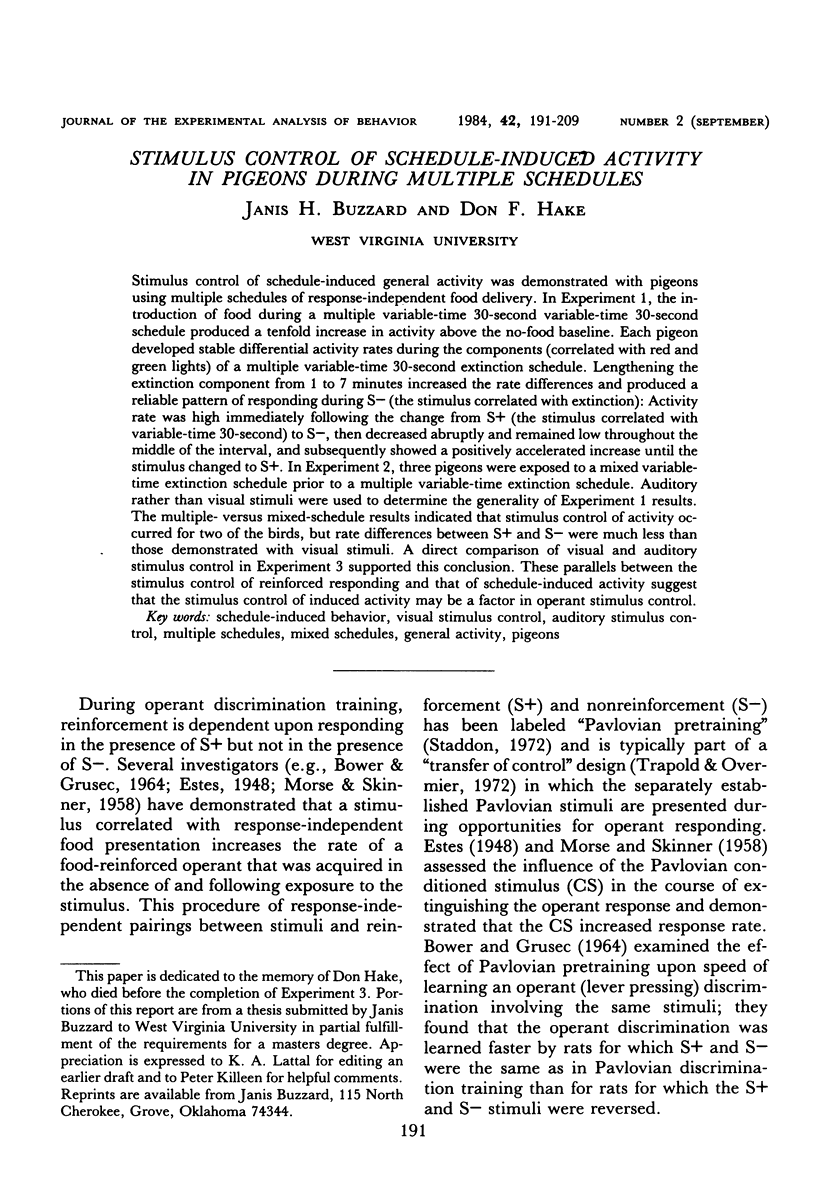

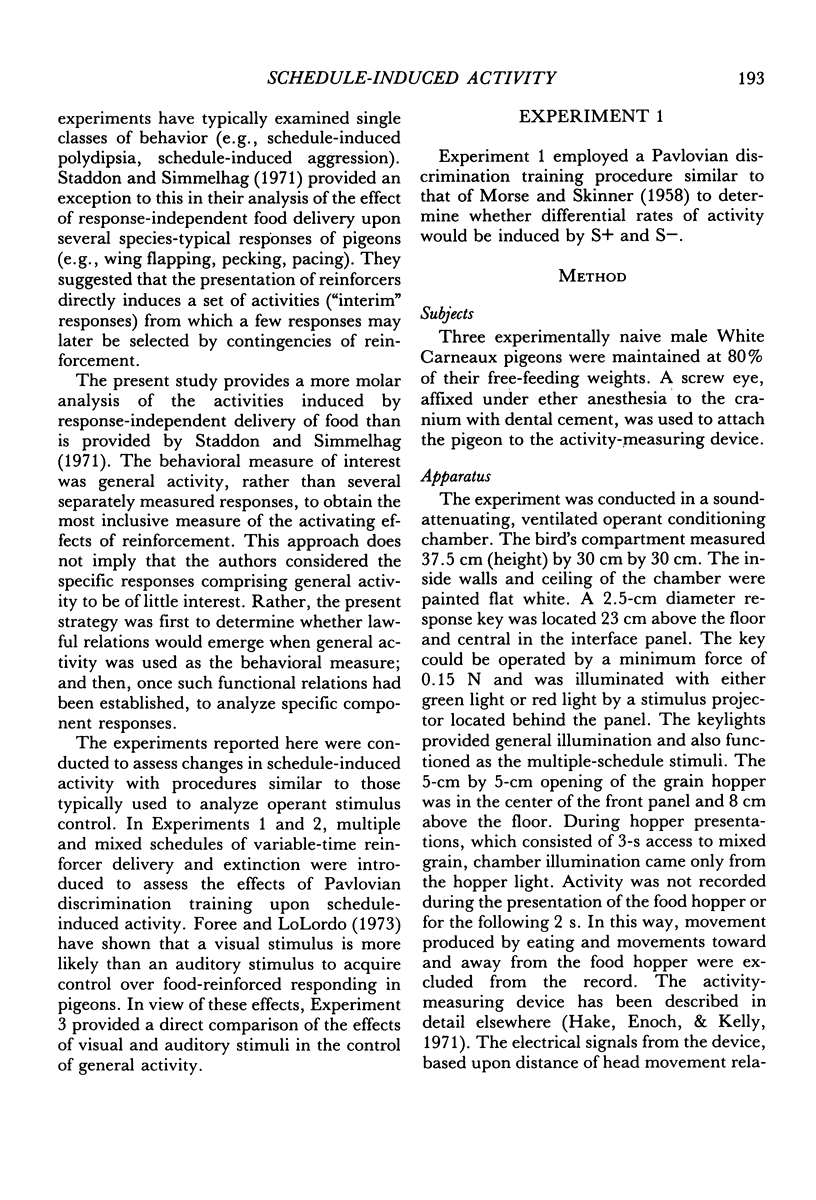
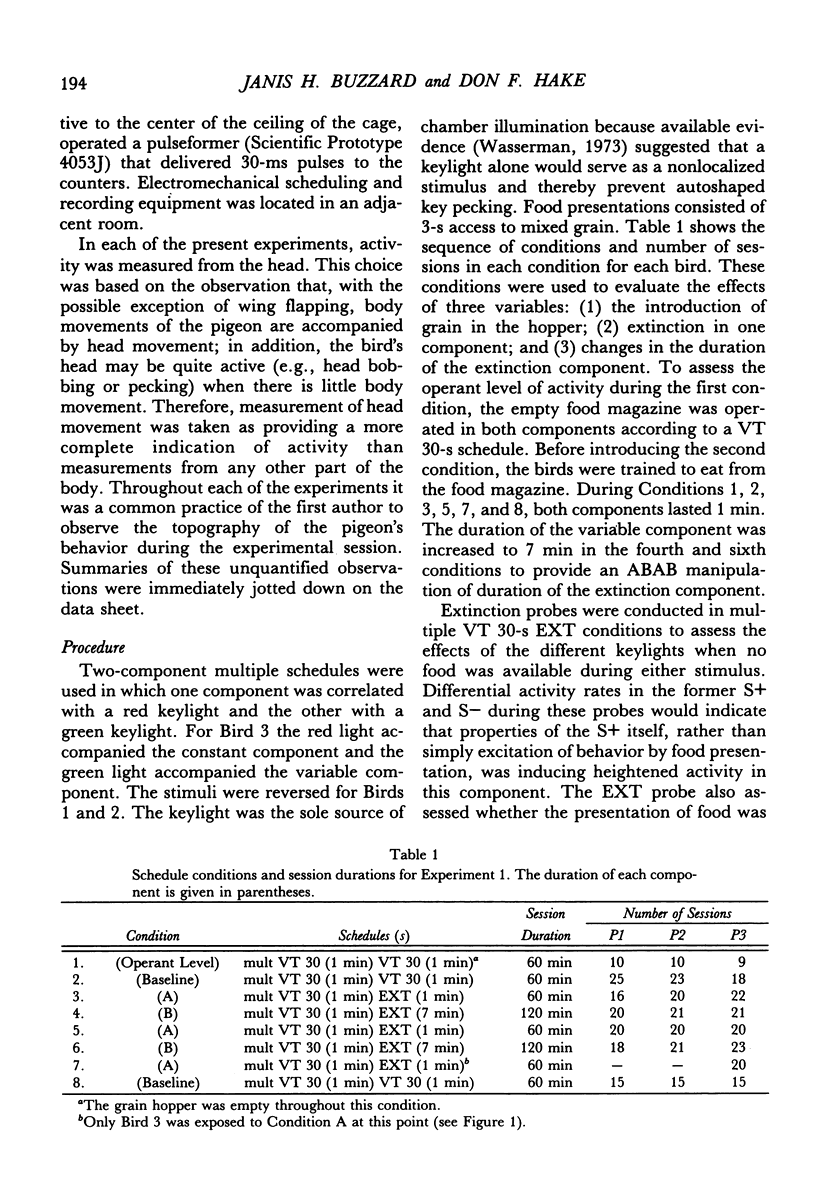
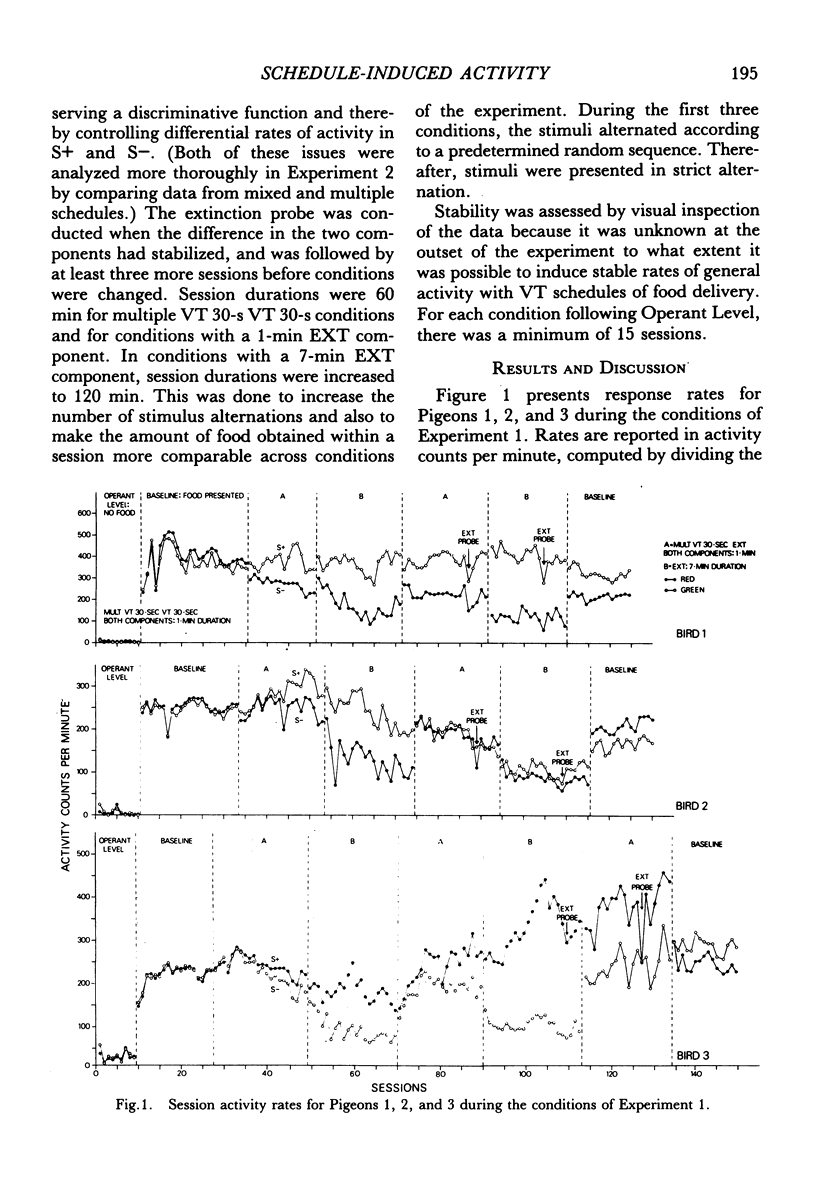
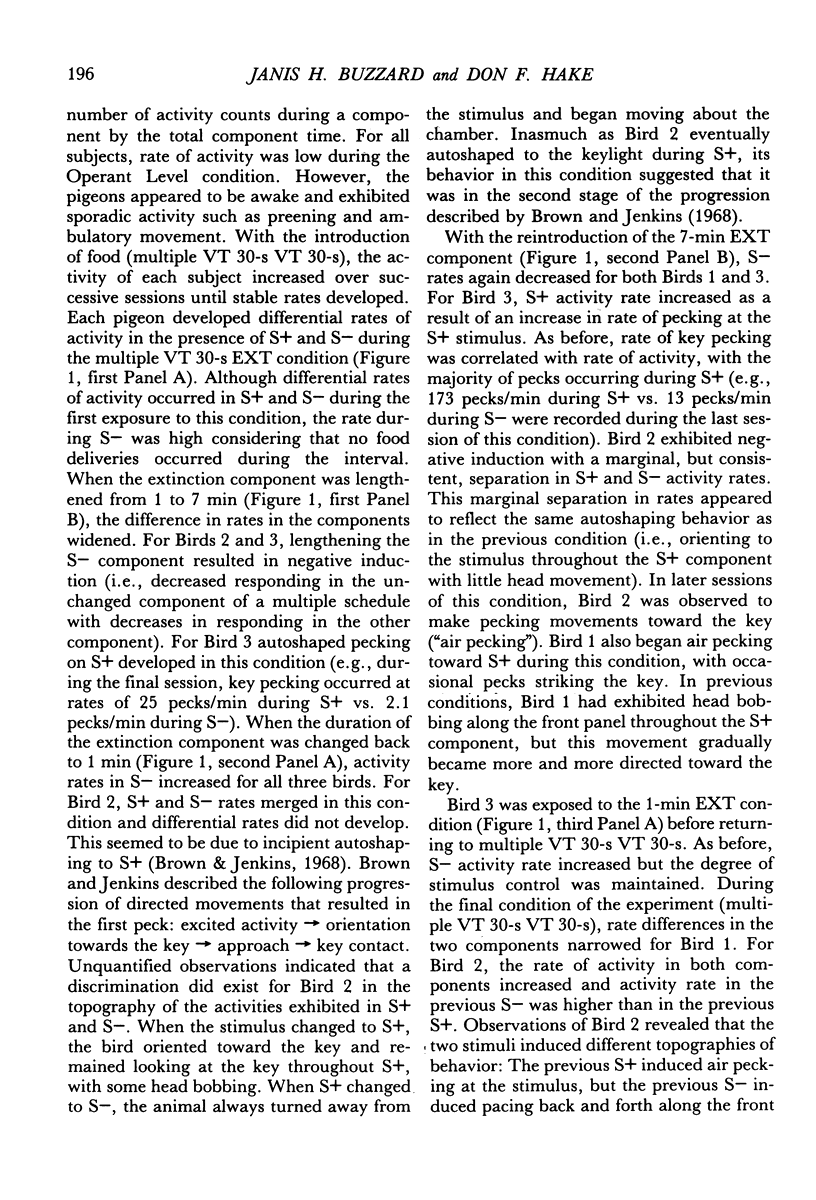



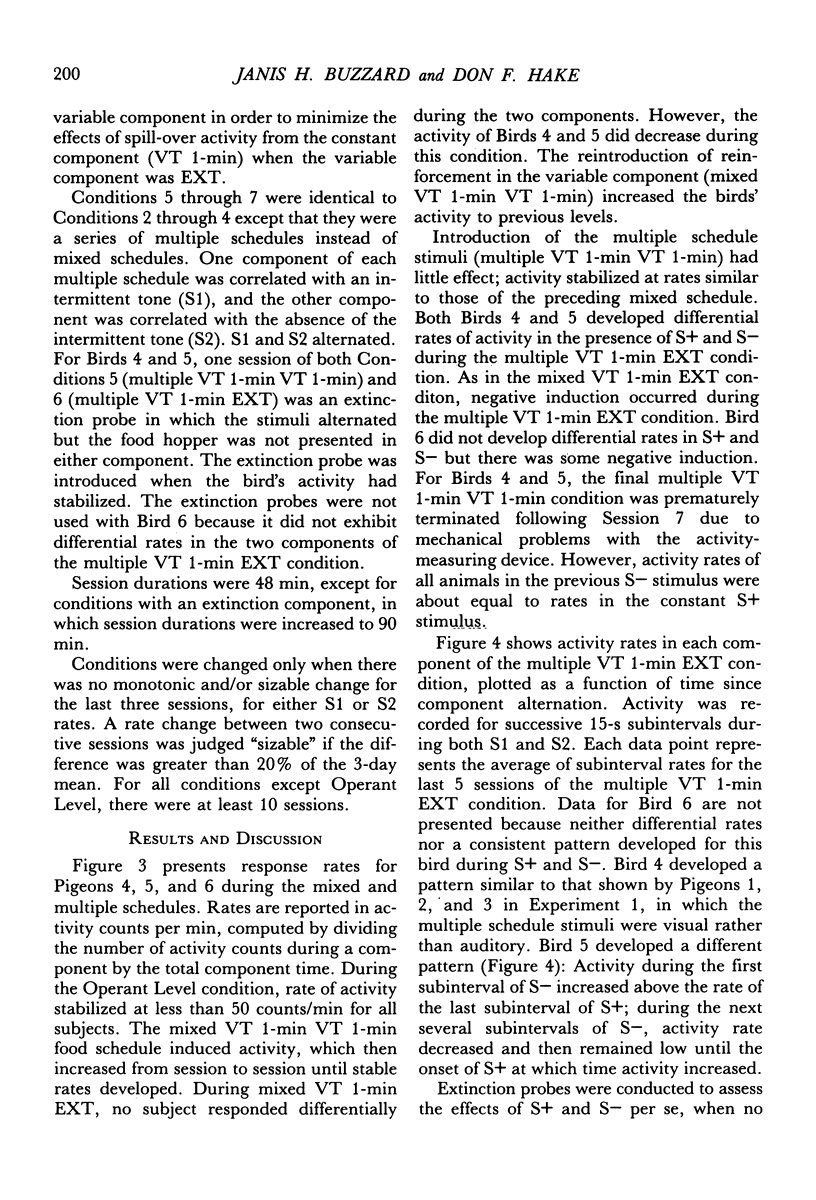

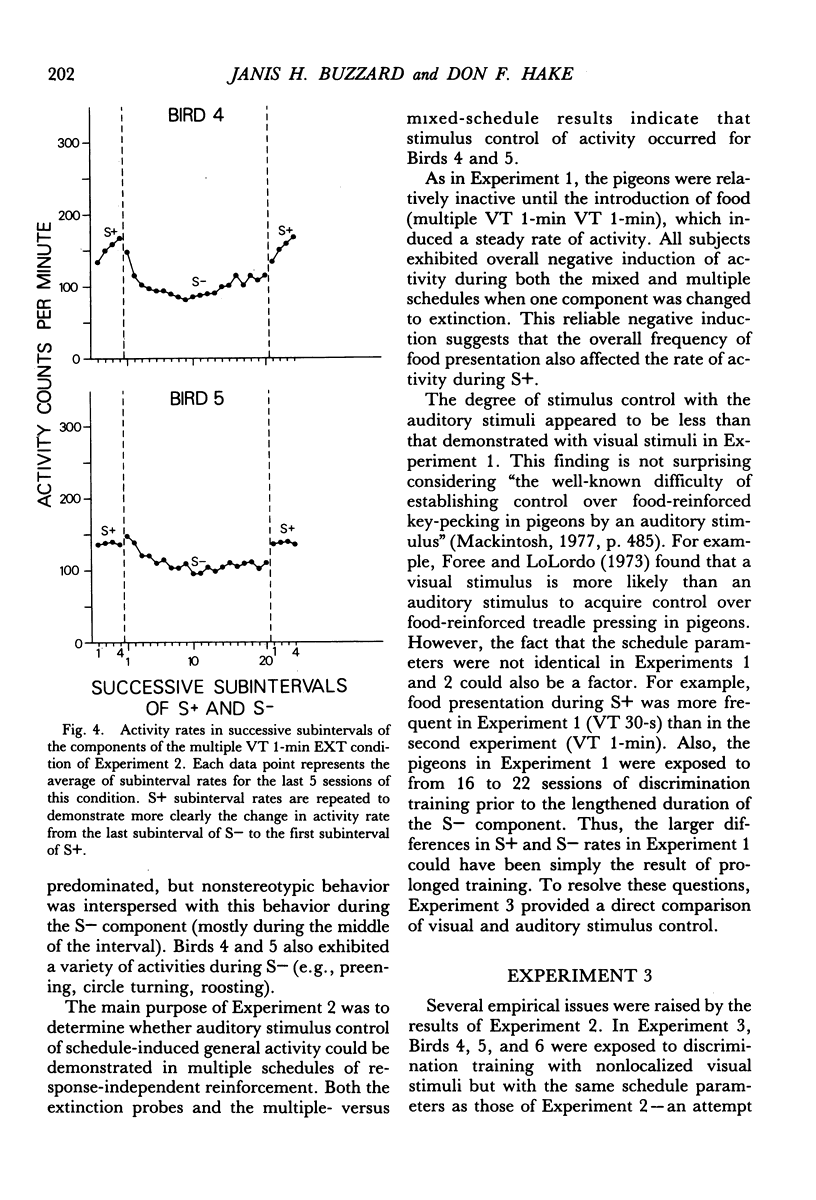

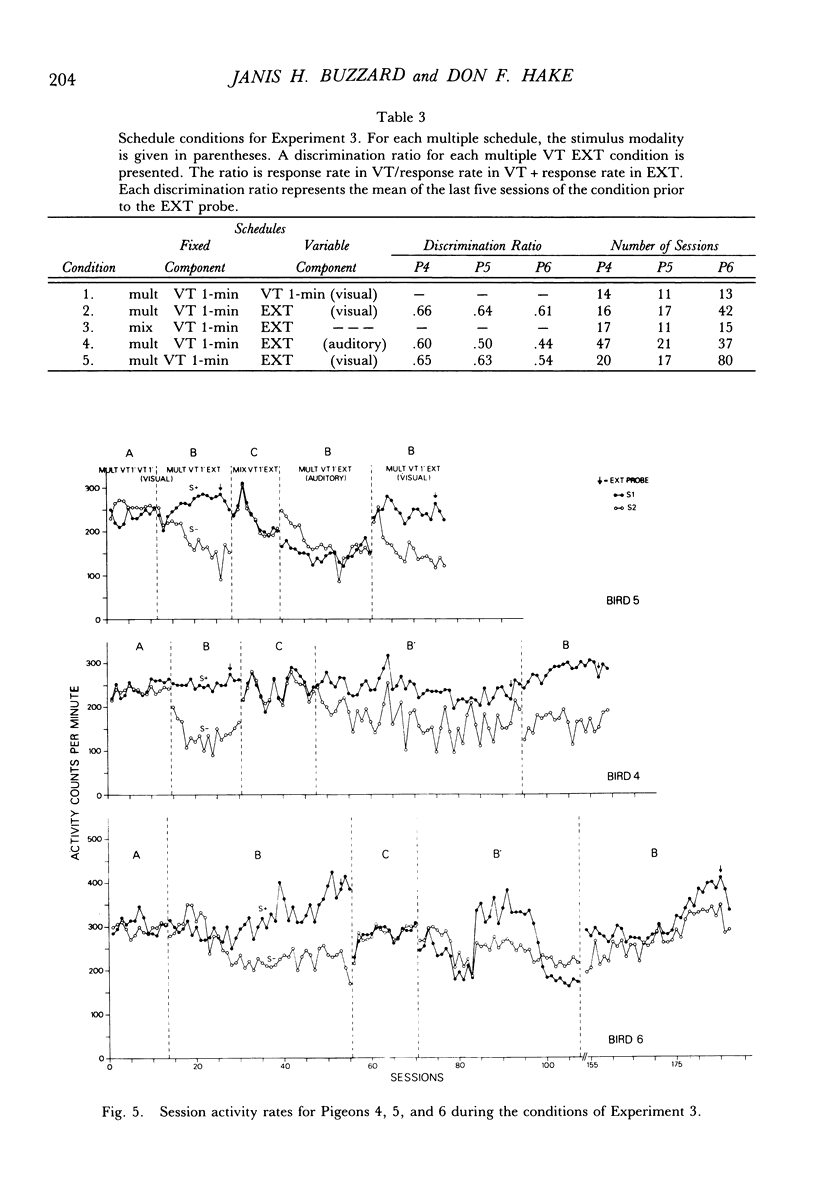
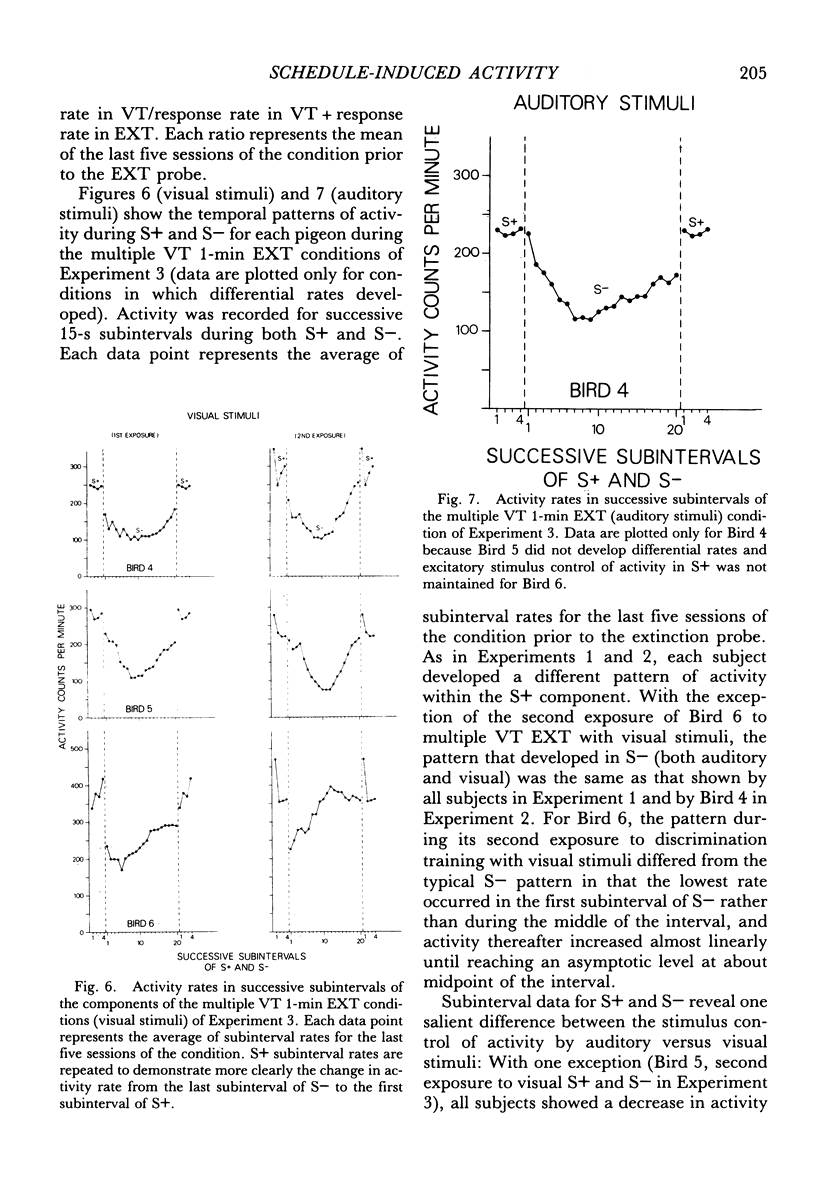
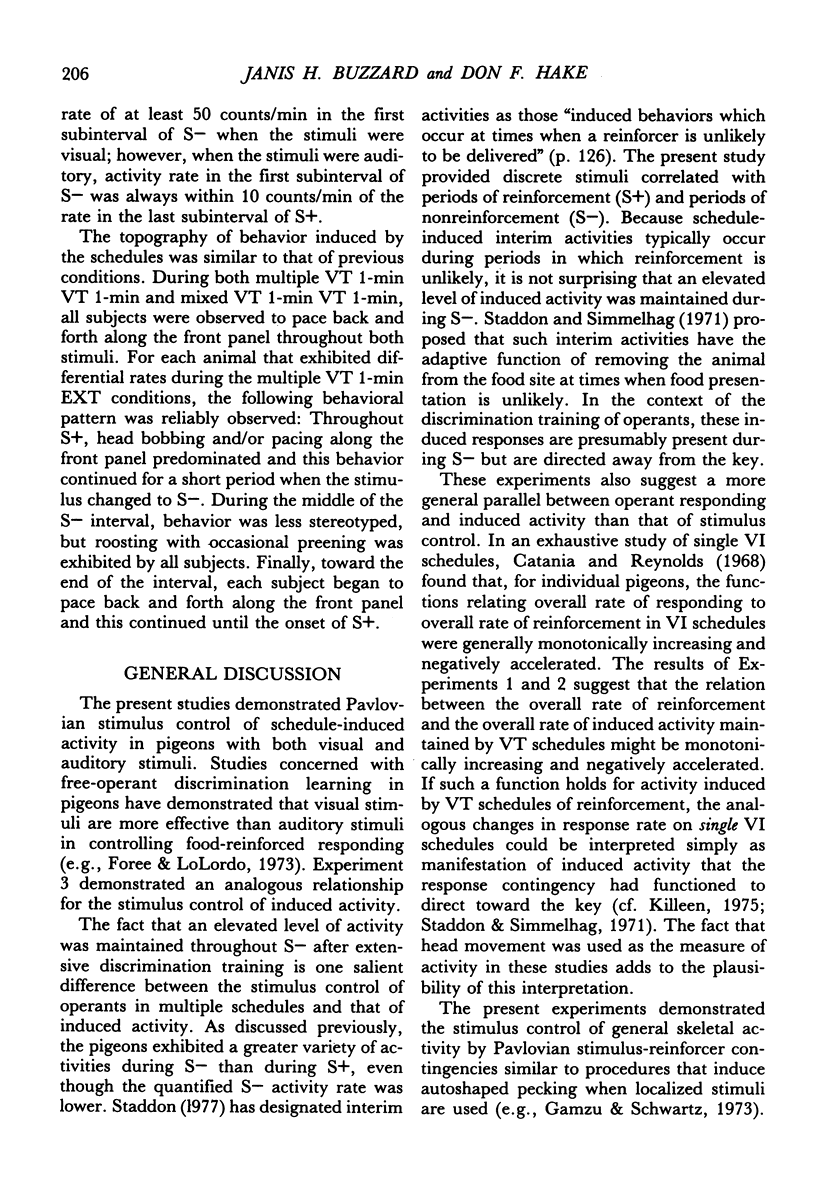
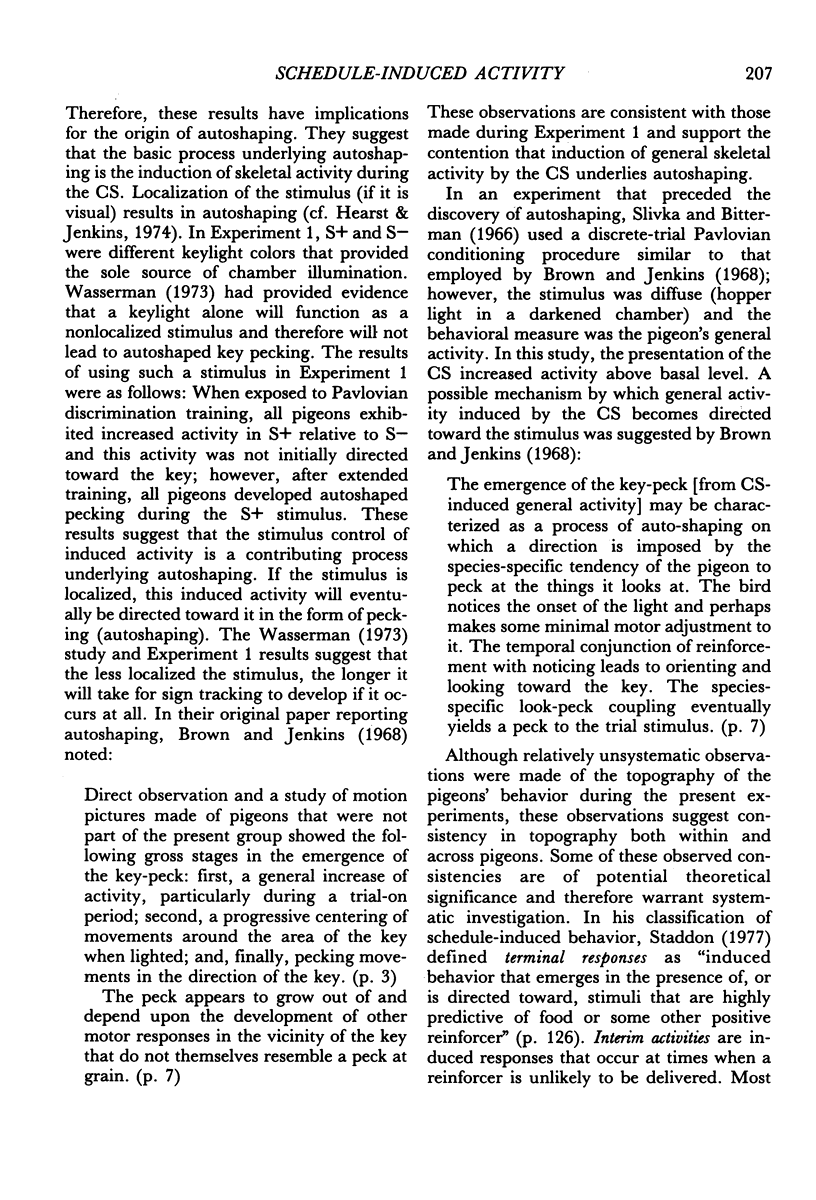
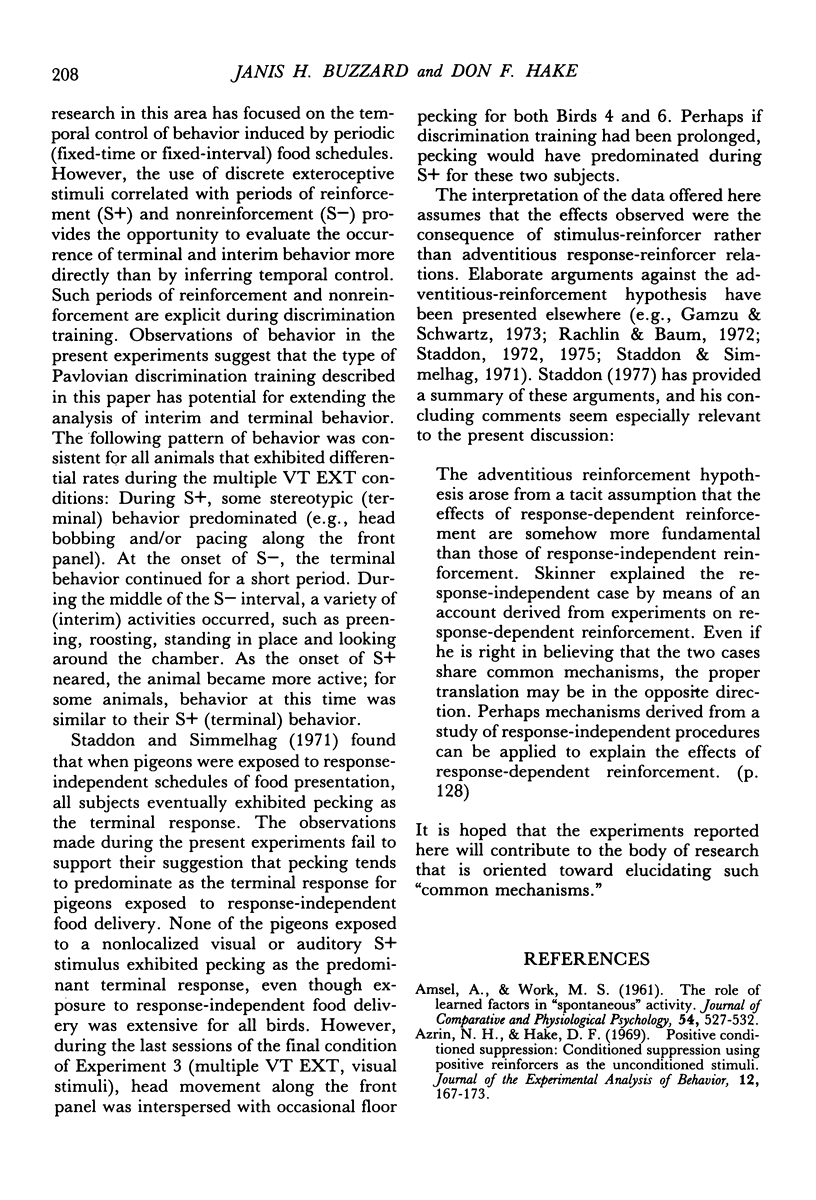
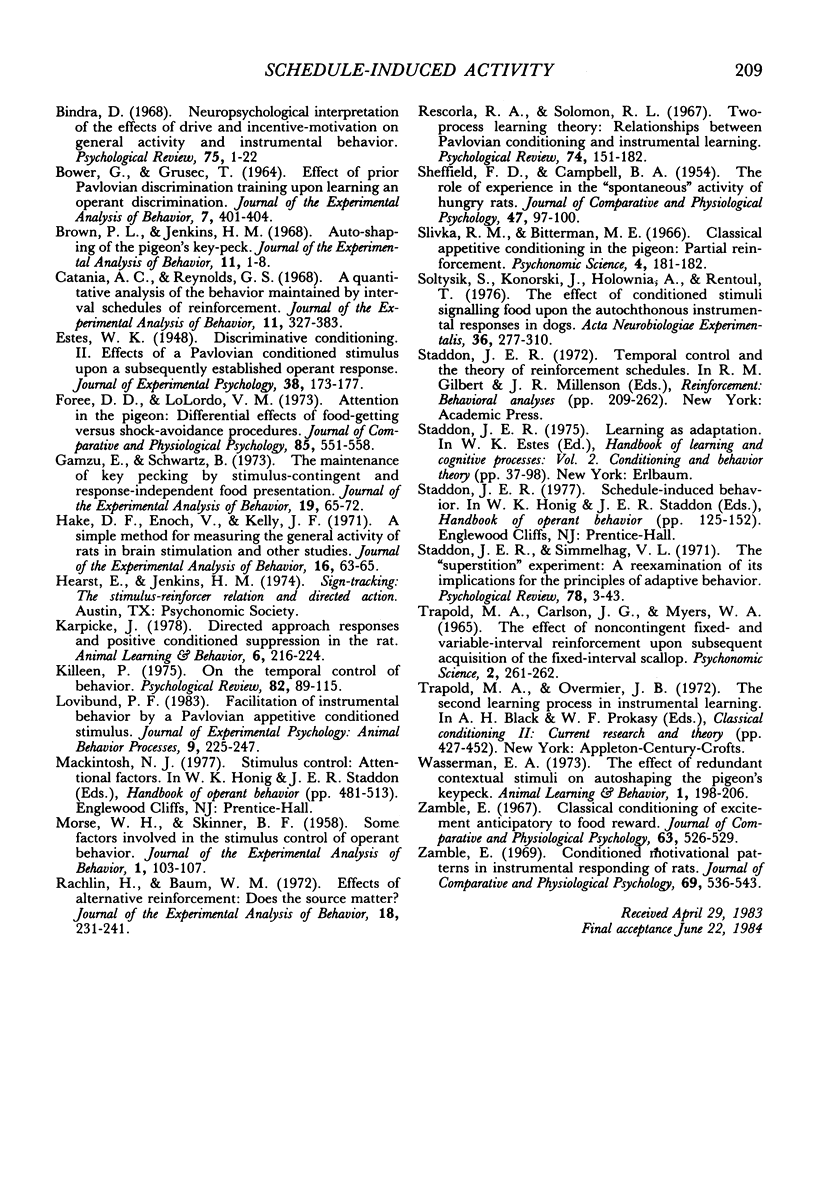
Selected References
These references are in PubMed. This may not be the complete list of references from this article.
- AMSEL A., WORK M. S. The role of learned factors in "spontaneous" activity. J Comp Physiol Psychol. 1961 Oct;54:527–532. doi: 10.1037/h0044709. [DOI] [PubMed] [Google Scholar]
- Azrin N. H., Hake D. F. Positive conditioned suppression: conditioned suppression using positive reinforcers as the unconditioned stimuli. J Exp Anal Behav. 1969 Jan;12(1):167–173. doi: 10.1901/jeab.1969.12-167. [DOI] [PMC free article] [PubMed] [Google Scholar]
- BOWER G., GRUSEC T. EFFECT OF PRIOR PAVLOVIAN DISCRIMINATION TRAINING UPON LEARNING AN OPERANT DISCRIMINATION. J Exp Anal Behav. 1964 Nov;7:401–404. doi: 10.1901/jeab.1964.7-401. [DOI] [PMC free article] [PubMed] [Google Scholar]
- Catania A. C., Reynolds G. S. A quantitative analysis of the responding maintained by interval schedules of reinforcement. J Exp Anal Behav. 1968 May;11(3 Suppl):327–383. doi: 10.1901/jeab.1968.11-s327. [DOI] [PMC free article] [PubMed] [Google Scholar]
- Foree D. D., LoLordo V. M. Attention in the pigeon: differential effects of food-getting versus shock-avoidance procedures. J Comp Physiol Psychol. 1973 Dec;85(3):551–558. doi: 10.1037/h0035300. [DOI] [PubMed] [Google Scholar]
- Gamzu E., Schwartz B. The maintenance of key pecking by stimulus-contingent and response-independent food presentation. J Exp Anal Behav. 1973 Jan;19(1):65–72. doi: 10.1901/jeab.1973.19-65. [DOI] [PMC free article] [PubMed] [Google Scholar]
- Hake D. F., Enoch V., Kelly J. F. A simple method for measuring the general activity of rats in brain stimulation and other studies. J Exp Anal Behav. 1971 Jul;16(1):63–65. doi: 10.1901/jeab.1971.16-63. [DOI] [PMC free article] [PubMed] [Google Scholar]
- MORSE W. H., SKINNER B. F. Some factors involved in the stimulus control of operant behavior. J Exp Anal Behav. 1958 Jan;1:103–107. doi: 10.1901/jeab.1958.1-103. [DOI] [PMC free article] [PubMed] [Google Scholar]
- Rachlin H., Baum W. M. Effects of alternative reinforcement: does the source matter? J Exp Anal Behav. 1972 Sep;18(2):231–241. doi: 10.1901/jeab.1972.18-231. [DOI] [PMC free article] [PubMed] [Google Scholar]
- Rescorla R. A., Solomon R. L. Two-process learning theory: Relationships between Pavlovian conditioning and instrumental learning. Psychol Rev. 1967 May;74(3):151–182. doi: 10.1037/h0024475. [DOI] [PubMed] [Google Scholar]
- SHEFFIELD F. D., CAMPBELL B. A. The role of experience in the spontaneous activity of hungry rats. J Comp Physiol Psychol. 1954 Apr;47(2):97–100. doi: 10.1037/h0059475. [DOI] [PubMed] [Google Scholar]
- Soltysik S., Konorski J., Holownia A., Rentoul T. The effect of conditioned stimuli signalling food upon the autochthonous instrumental responses in dogs. Acta Neurobiol Exp (Wars) 1976;36(3):277–310. [PubMed] [Google Scholar]
- Zamble E. Classical conditioning of excitement anticipatory to food reward. J Comp Physiol Psychol. 1967 Jun;63(3):526–529. doi: 10.1037/h0024626. [DOI] [PubMed] [Google Scholar]
- Zamble E. Conditioned motivational patterns in instrumental responding of rats. J Comp Physiol Psychol. 1969 Nov;69(3):536–543. doi: 10.1037/h0028215. [DOI] [PubMed] [Google Scholar]


